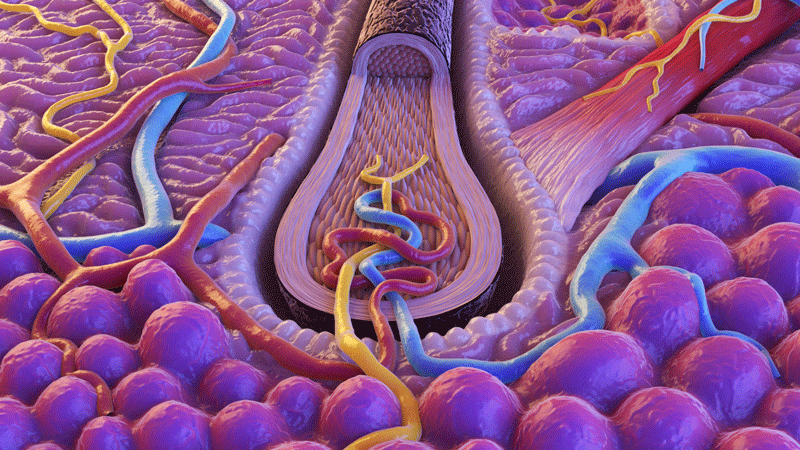Skin

The integumentary system forms the body’s outer protective barrier, made up of the skin, hair, nails, and associated glands. It shields against injury, pathogens, UV radiation, and chemical exposure while regulating temperature, mediating sensation, and supporting immune and metabolic functions. This system communicates constantly with the external environment through touch, microbiome interactions, and chemical signaling.
Relevant Herbal Actions:
Herbal Allies:
Protection
- First-line barrier against injury, pathogens, UV radiation, and chemical exposure
- Keratin creates a tough, water-resistant shield
- Sebum maintains acidic, antimicrobial surface
- Melanin protects deeper tissues from UV damage
- Langerhans cells defend against microbes
Sensation
- Detects pain, temperature, pressure, vibration, fine touch, and stretch
Thermoregulation
- Vasodilation releases heat
- Vasoconstriction conserves heat
- Sweating cools through evaporation
- Goosebumps trap warm air near the skin
Excretion
- Eliminates small amounts of metabolic waste (urea, ammonia, salts, water)
- Helps maintain electrolyte and pH balance
Synthesis & Metabolism
- Vitamin D synthesis from UV exposure
- Lipid storage and metabolism in hypodermis
- Sebum provides barrier lipids and moisture retention
Absorption & Communication
- Absorbs lipid-soluble substances
- Microbiome-immune interactions regulate defense and inflammation
- Skin expression, scent, and touch serve psychosocial signaling functions
Epidermis (stratified squamous keratinized epithelium)
- Cell types
- Keratinocytes
- Melanocytes
- Langerhans cells
- Merkel cells
- Basal cells
- Strata
- Stratum basale
- Stratum spinosum
- Stratum granulosum
- Stratum lucidum (thick skin only)
- Stratum corneum (implied functional layer)
Dermis (dense irregular connective tissue)
- Fibers & cells
- Collagen
- Elastin
- Fibroblasts
- Layers
- Papillary layer (areolar tissue, capillaries, tactile receptors)
- Reticular layer (dense collagen, sweat glands, sebaceous glands, hair roots)
- Additional structures
- Blood vessels
- Lymphatic vessels
- Nerve endings and sensory receptors
- Arrector pili muscles
- Mast cells
- Lymphocytes
- Macrophages
Hypodermis (subcutaneous layer)
- Loose connective tissue
- Adipose tissue
- Energy storage
- Shock absorption
- Insulation
- Structural anchoring to muscle and bone
Sensory Receptors
- Free nerve endings: pain, temperature
- Meissner’s corpuscles: light touch
- Pacinian corpuscles: deep pressure, vibration
- Merkel discs: fine touch
- Ruffini endings: stretch and warmth